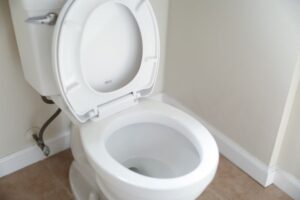
Fibroids of any size can cause disruptive symptoms, but the larger they grow, the more trouble you can develop. In fact, with larger fibroids, more disruptive symptoms such as frequent urination or incontinence could become an issue.
Why could fibroids mess with your bladder? Well, depending on the size and location of your non-cancerous uterine tumors, they could put pressure on surrounding organs, including your bladder. Quickly, you could understand why these growths can affect when and why you have to pee.
A study in the Journal of American Obstetrics & Gynecology revealed that large fibroids are able to change your uterine size. And, when that happens, the expanded organ can bump up against the bladder. In turn, this will cause pressure, creating the need to urinate frequently, often with great urgency, and little warning.
Fortunately, the same study revealed that treating your fibroids can reduce the frequency with which you need to urinate. But there’s a catch—while you may not need to pee as often after fibroid treatment, you may well still experience “urge incontinence.”
What is that, exactly? Well, it’s that sudden, urgent feeling that you have to pee. It’s the immediate transition from “Who cares where the bathroom is” to “I’m about to pee my pants,” with very little in-between time. Now, many women are able to move past this issue after getting rid of fibroids. But, since that’s not the case for everyone, here are some tips for bladder retraining, repurposed from the American College of Physicians.
Why would you need to retrain your bladder after you’ve treated fibroids? The goal is to help you make fewer bathroom trips throughout the day. Sounds like a good plan, right?
To begin with, try keeping a ‘urine journal,’ to document how many times you go to the bathroom, and at which times of day those visits occur. After a few days of tracking, you’ll start trying to increase the amount of time between urination. And, to help you accomplish that goal, you can try some of these ACOG suggestions:
Remember, while fibroid-related incontinence can be embarrassing, it doesn’t have to be a permanent problem. To start clearing up your bladder issues, reach out to our team of fibroid experts in Atlanta for more information on minimally invasive fibroid treatments!

Scheduling
Please contact our dedicated specialists to schedule a consultation today.
2024 Georgia Fibroids. All rights reserved. Website Design by Healthcare Success